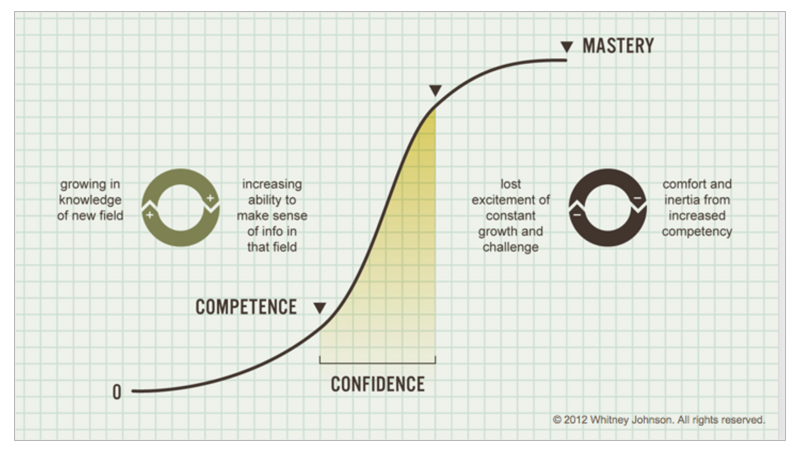ATD Blog
Developing Talent Throughout the Job Life Cycle
Fri Nov 03 2017

Once upon a time, employees passed an entire career in just a job or two. Not so today, which leaves us with questions seldom considered a generation ago: How long can we expect an employee to stay in place? What will encourage the valuable ones to stay longer? How can we anticipate when someone will need a change to remain fresh and enthusiastic about working for us? Talent development is an investment, and we want a reasonable hope of return. As with wise financial investing, even though we don’t have complete control over the outcome, there are strategies we can use to increase the odds in our favor.
Using the S curve as a model for the life cycle of a job, there is an approximately six-month period at the low end of the curve that new hires require to achieve competence, followed by between three and four years of hypergrowth while scaling the back of the S curve, a time of high engagement and high productivity until the role is fully mastered, the learning curve exhausted. At that point, boredom can result, engagement suffers, and accomplishment diminishes, sometimes drastically.
The brain likes to learn and produces feel-good chemicals when it does. Let it stagnate, and it no longer stimulates our sense of well-being. Personal job satisfaction declines, and often the boss’s satisfaction with an employee’s performance drops along with it. It’s better to anticipate the need for change before this plateau is reached.

Numerous surveys demonstrate that the more disengaged an employee is feeling, the more likely they are to launch a new job search. Here are some key techniques to deploy when an individual we want to retain may require a new assignment to reignite their desire to stay at an organization.
**
Evaluate Their Role
**Sometimes a change is needed even when no plateau is in sight. We can be too hasty to pull the plug on what appears to be a flatlining learning curve when a new hire is struggling in the early part of their tenure. Having already invested in recruitment, hiring, and training, it pays to evaluate whether an employee is simply in the wrong role.
Ask questions:
Have I positioned this employee to succeed?
Everyone does best in a job that allows them to use their distinctive strengths while they develop specific competencies. Sometimes, however, we place new hires in situations destined to be frustrating because they are only asked to struggle while having limited avenues open to contribute in satisfying ways. Make sure employees are presented with at least some tasks and responsibilities that they can succeed at right off the bat.
Why did I hire them?
What was it about this person that made you believe they would be a great contributor? It’s not uncommon to hire without evaluating precisely what the new employee is most needed to do and how they will fit with the existing pieces of our puzzle. As in sports, sometimes we take the most promising player available and then have to adjust the assignment to fit their skillset.
Are they on a unique learning curve?
Many times, I’ve seen—and have even been—an employee in direct competition with another member of the team. Trying to take on a position that is already occupied by an entrenched player is an exercise in frustration—the new hire will almost always lose out, and knows it.
**
Extend the Life Cycle of a Learning Curve
**Hiring the most qualified applicant often means a quicker plateau. Strategize hiring for high potential rather than maximum qualifications.
Continue to stimulate learning through stretch assignments. Keep the work environment fresh through periodic changes in team members and projects, and reward achievement with new opportunities.
Train to train, not to retain. Don’t wait until an employee is halfway out the door to offer a chance to do something new. Make ongoing training your modus operandi and make sure valued employees know that there are roles available in the future that they are preparing to assume now.
**
Recognize That Change Is Always on the Horizon, and Prepare Proactively
**Remember the four-year use-by date: If employees aren’t challenged in a new way by this time, they’re more likely to leave.
Monitor enthusiasm levels. Does the employee feel that they have more to learn in their role, or is their perception that they are exhausting their potential? Know what they would like to do next. Ask early, before performance begins to slide.
If there is not another place for a talented employee to move in house, be the kind of boss who will help broker an advantageous move for them. None of us can have too many friends.
Use these tips to guide you as you develop your talent throughout the employment life cycle.
